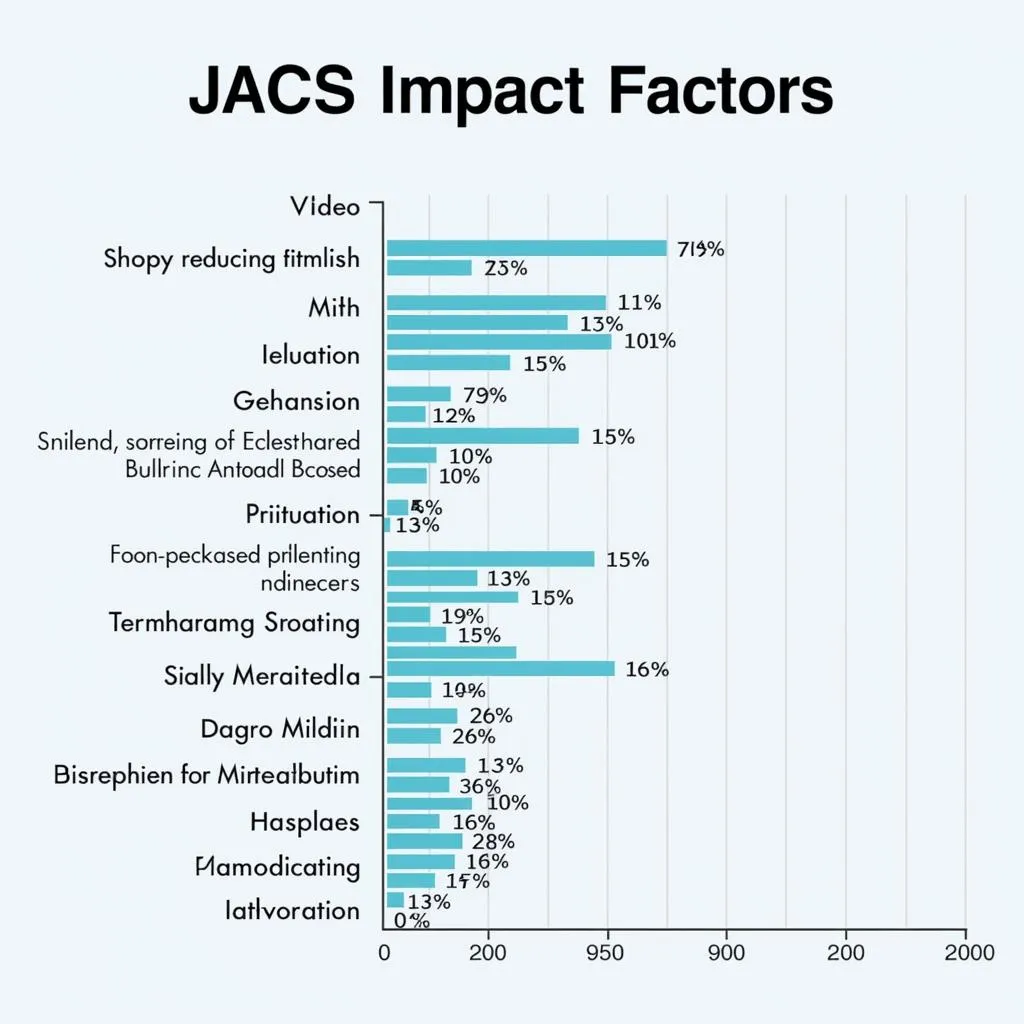The impact factor of the Journal of the American Chemical Society, often abbreviated as JACS, is a metric that reflects the journal’s prominence and influence within the field of chemistry. This number, calculated annually, signifies the average number of times articles published in JACS during the preceding two years have been cited by other scientific publications.
Understanding the Significance of Impact Factor
In the competitive realm of scientific publishing, the impact factor serves as a key indicator of a journal’s reputation and reach. A higher impact factor generally suggests that articles published in that journal are:
- Highly Cited: Indicating significant influence on subsequent research within the field.
- Widely Read: Demonstrating a broad readership among researchers and scholars.
- Rigorously Reviewed: Reflecting a stringent peer-review process that ensures high-quality publications.
 Comparison of Journal Impact Factors
Comparison of Journal Impact Factors
The Impact Factor of JACS: A Mark of Excellence
The Journal of the American Chemical Society consistently ranks among the top chemistry journals globally, boasting a consistently high impact factor. This esteemed position reflects JACS’s long-standing tradition of publishing groundbreaking research across various chemistry disciplines.
Factors Influencing the JACS Impact Factor
Several factors contribute to the Journal of the American Chemical Society’s impressive impact factor:
- Publication of High-Quality Research: JACS maintains rigorous standards, accepting only novel, impactful research that significantly advances chemical knowledge.
- Global Reach and Reputation: JACS holds a prominent position within the international scientific community, attracting submissions and readers from around the world.
- Broad Scope: JACS covers a wide range of chemistry sub-disciplines, appealing to a diverse readership and fostering interdisciplinary dialogue.
 Researchers Submitting Manuscript to JACS
Researchers Submitting Manuscript to JACS
The Impact Factor in Context: A Balanced Perspective
While the impact factor provides a valuable metric for evaluating journal influence, it’s crucial to consider its limitations.
- Field-Specific Nature: Impact factors can vary significantly across different scientific disciplines, making direct comparisons between journals in different fields challenging.
- Potential for Bias: Citation practices can be influenced by various factors, including self-citation and journal promotion strategies, which may impact the accuracy of the impact factor as a sole measure of quality.
Beyond the Numbers: The Broader Impact of JACS
The Journal of the American Chemical Society’s influence extends beyond its numerical impact factor. JACS plays a pivotal role in:
- Shaping the Future of Chemistry: By publishing cutting-edge research, JACS contributes to the advancement of chemical knowledge and inspires future innovations.
- Fostering Collaboration: As a platform for scientific discourse, JACS connects researchers worldwide, promoting collaboration and the exchange of ideas.
- Disseminating Knowledge: JACS makes scientific findings accessible to a global audience, contributing to education and broader scientific literacy.
 Scientists Discussing Research Published in JACS
Scientists Discussing Research Published in JACS
Conclusion
The impact factor of the Journal of the American Chemical Society stands as a testament to its exceptional quality and influence within the field of chemistry. While it’s essential to interpret the impact factor within its proper context, its consistently high value reflects JACS’s enduring commitment to publishing groundbreaking research and shaping the future of chemistry.
FAQs
1. How is the impact factor calculated?
The impact factor is calculated by dividing the number of citations received by a journal’s articles published in the preceding two years by the total number of articles published during that same period.
2. Is the impact factor the only measure of a journal’s quality?
No, the impact factor is just one metric among many for assessing journal quality. Other factors, such as editorial board expertise, peer-review rigor, and publication ethics, are also essential considerations.
3. Where can I find the most up-to-date impact factor for JACS?
The most current impact factor for JACS and other journals is typically available through databases like Journal Citation Reports (JCR).
Need help?
Contact us 24/7:
Phone: 02043854663
Email: [email protected]
Address: Khu 34, Bac Giang, 260000, Vietnam.